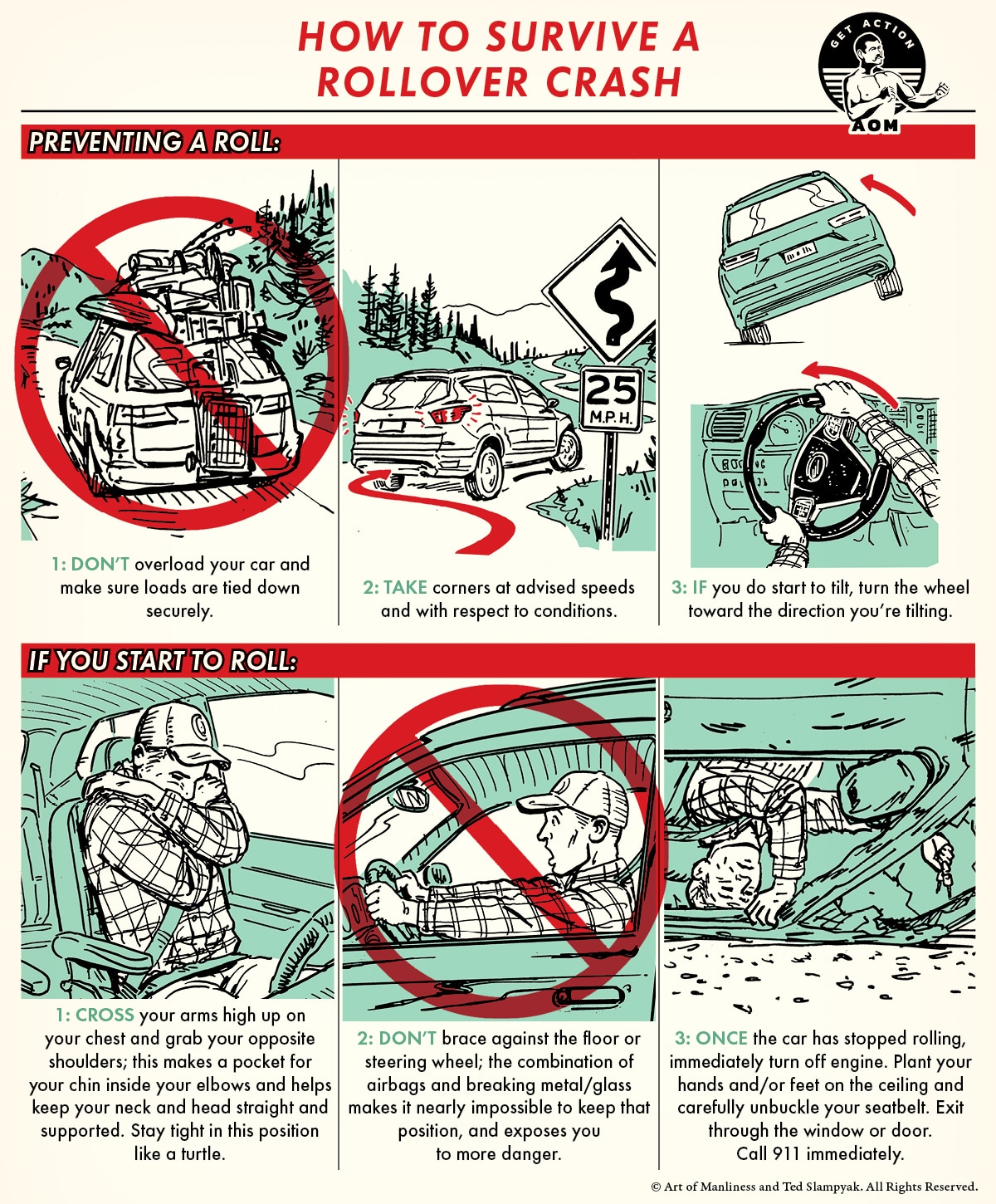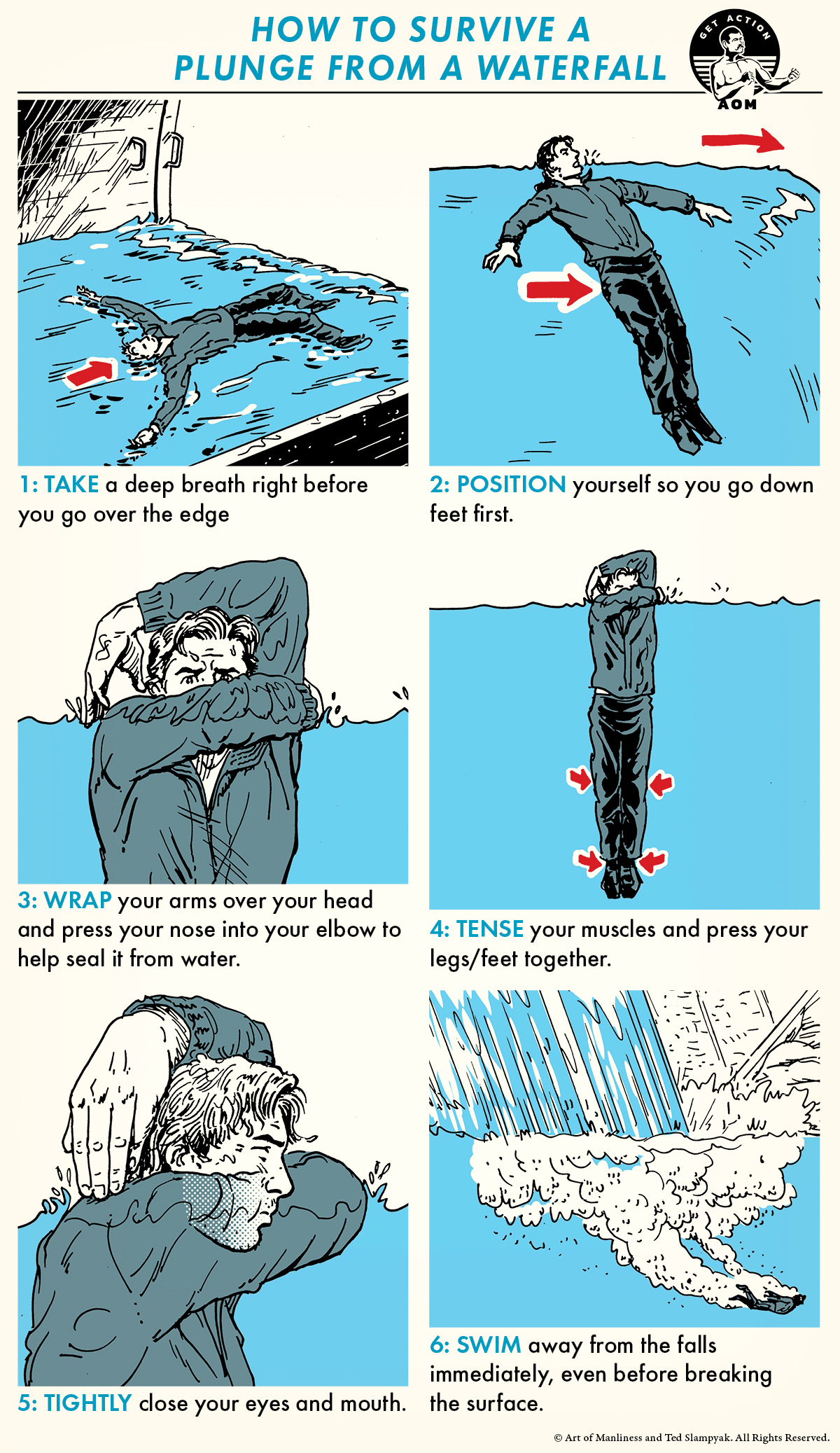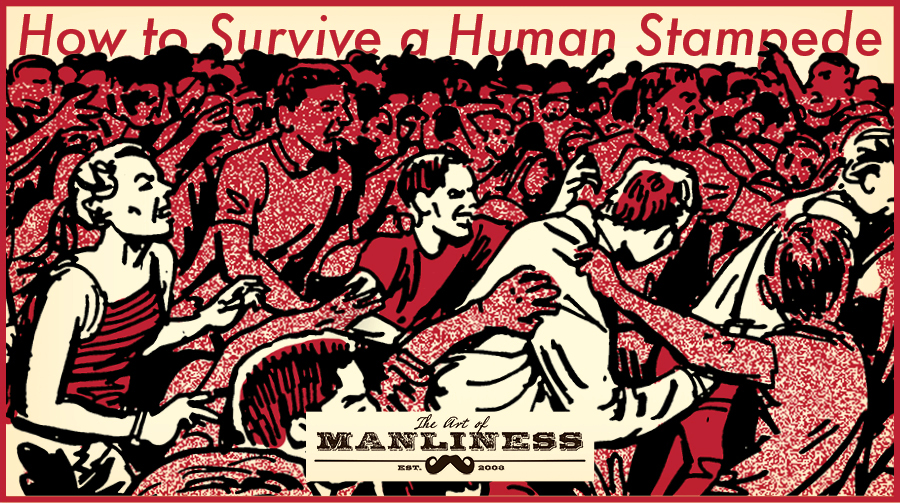An important part of manhood has always been about having the competence to be effective in the world — having the breadth of skills, the savoir-faire, to handle any situation you find yourself in. With that in mind, each Sunday we’ll be republishing one of the illustrated guides from our archives, so you can hone your manly know-how week by week.
Every year, millions of car accidents play out on our roads. In 2017, nearly two million people were injured in crashes and over 34,000 people died. Fortunately, today’s cars are safer than they ever have been and a higher percentage of people are walking away from collisions that would have put them in the hospital just a few decades ago.
Yet even with safer cars, accidents with serious consequences still happen. This is particularly the case with rollover crashes.
Rollovers, as the name implies, occur when a car flips over. While rollover crashes aren’t super common, they are disproportionately dangerous: while only about 2% of auto accidents involve a rollover, they account for 35% of all traffic fatalities.
Three-fourths of rollover accidents are single vehicle crashes, and they’re frequently the result of driver error — recklessness, carelessness, or drowsiness.
According to the National Highway Traffic Safety Administration, “Drivers of rollover vehicles tend to be males, under 40 years old, driving on two-way roads without dividing barriers.” 40% of fatal rollover crashes involve speeding, and 70% occur on roads with a speed limit over 55 mph.
Other risk factors include driving a vehicle with a higher center of gravity (like vans, trucks, and SUVs) which are far more likely to roll, driving in adverse weather conditions or on uneven terrain, and driving on tires with poor tread. 75% of all rollovers happen on rural roads, and 95% of single car rollovers occur because a car slides and “trips” on soft dirt, a guardrail, a curb, or another obstruction.
The best way to survive a rollover accident is thus to prevent one from happening at all by driving safely. If a rollover does still happen to you, there are split-second decisions you can make that can improve your chances of walking away from the crash. Rehearse and practice the methods described above, so they become second nature and automatic if you do end up in a rollover accident. Hopefully, you’ll never have to use these skills.
Thanks to Wyatt Knox at Team O’Neill Rally School in New Hampshire for consulting on this post.
Illustrated by Ted Slampyak
Tags: Cars







